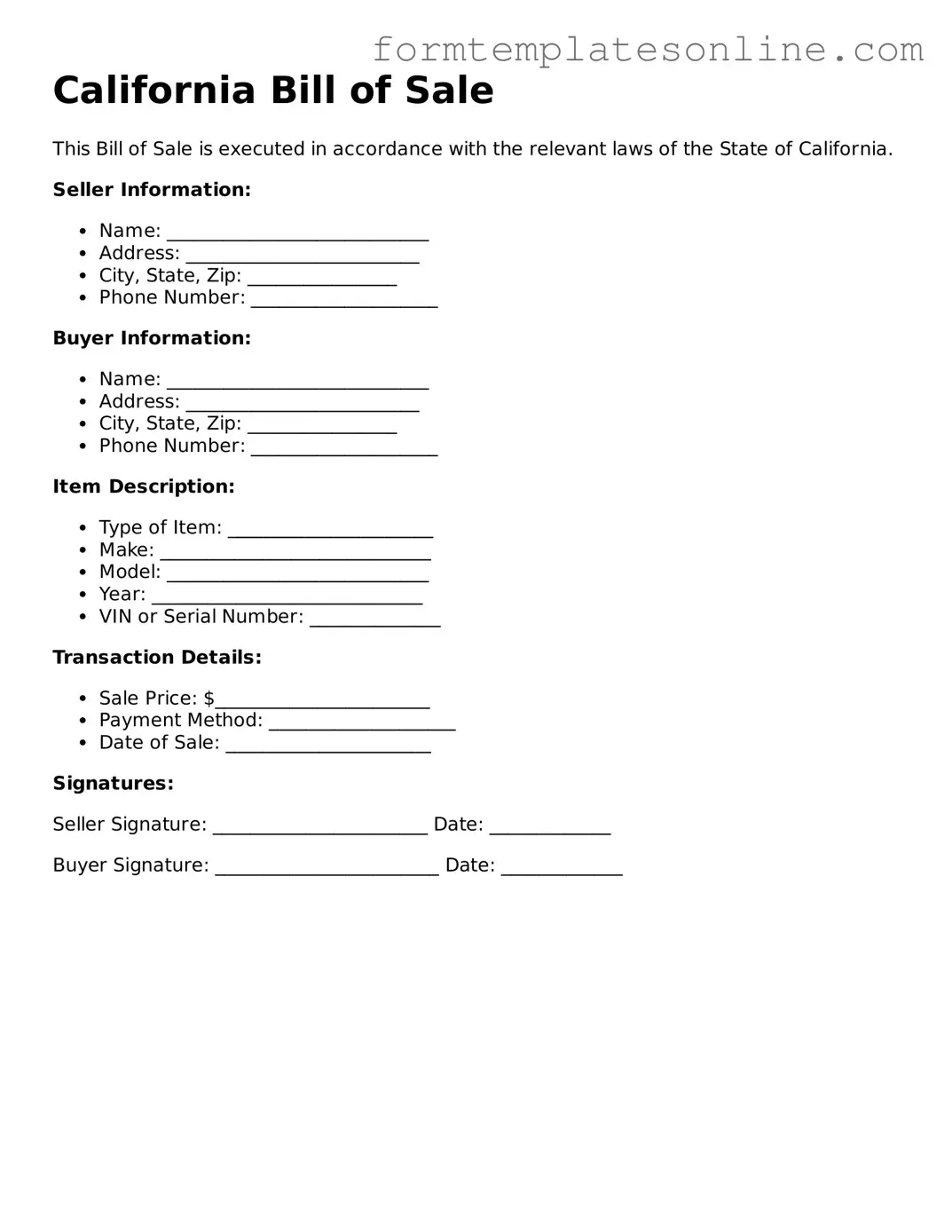What is a California Bill of Sale form?
A California Bill of Sale form is a legal document that records the transfer of ownership of personal property from one party to another. This form is commonly used for the sale of vehicles, boats, and other tangible items. It serves as proof of the transaction and includes details such as the buyer's and seller's names, the description of the item being sold, the sale price, and the date of the transaction. Having a Bill of Sale can help protect both parties in case of disputes or legal issues in the future.
Is a Bill of Sale required in California?
While a Bill of Sale is not legally required for every transaction in California, it is highly recommended, especially for significant purchases like vehicles or boats. Certain transactions, such as the sale of a vehicle, do require a Bill of Sale for registration purposes. For example, when transferring ownership of a car, the California Department of Motor Vehicles (DMV) requires a Bill of Sale to document the sale and facilitate the transfer of title.
What information should be included in a California Bill of Sale?
A comprehensive California Bill of Sale should include several key pieces of information. This includes the full names and addresses of both the buyer and seller, a detailed description of the item being sold (including make, model, year, and identification numbers if applicable), the sale price, and the date of the transaction. Additionally, both parties should sign the document to acknowledge their agreement to the terms of the sale. Including this information helps ensure clarity and can prevent misunderstandings later on.
Can a Bill of Sale be used as a receipt?
Yes, a Bill of Sale can serve as a receipt for the transaction. When both parties sign the document, it confirms that the buyer has paid the agreed-upon price and that the seller has transferred ownership of the item. This receipt-like function provides evidence of the transaction, which can be useful for record-keeping or if any disputes arise in the future. It is advisable for both parties to keep a copy of the Bill of Sale for their records.
